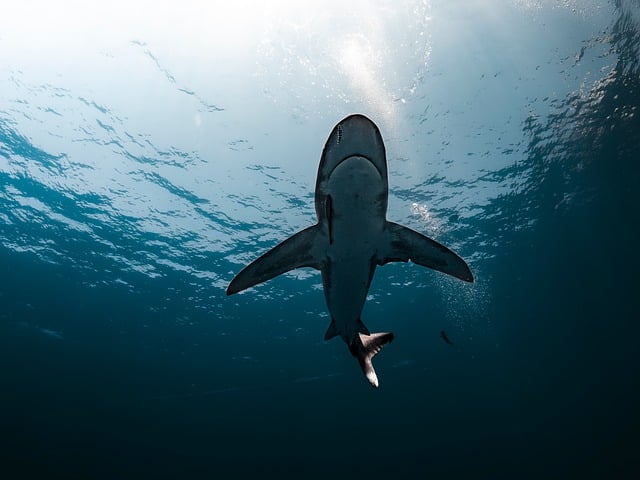
Shark Echoes Exploring Nature Powerful Predators
The ocean is a vast cathedral of blue, a place where silence and sound mingle in a rhythm older than the first tide. Within this watery cathedral, a figure of myth and science moves with a grace that belies its fierce reputation: the shark. These creatures have captivated human imagination for millennia, yet they remain enigmatic, largely misunderstood members of marine ecosystems. In this article, we take a closer look at the biology, behavior, and ecological significance of sharks, exploring how they weave into the intricate tapestry of ocean life and why protecting them is essential for the health of the planet.
How Sharks Perceive the World
Sharks possess a suite of specialized senses that allow them to navigate, locate prey, and evade predators with remarkable efficiency. The electroreceptor system, housed in the ampullae of Lorenzini, detects minute electric fields generated by muscle contractions in other animals. This sense is so sensitive that a shark can pick out a small fish lying just below the sand. Complementing this is their ability to detect vibrations and pressure changes in the water, a skill honed by the lateral line system. Vision also plays a critical role; while many species have poor eyesight in daylight, they can see clearly at night or in turbid waters, relying on a combination of rod cells and a reflective layer behind the retina known as the tapetum lucidum.
- Electroreception: The ampullae of Lorenzini, tiny pores that sense electric fields, are a hallmark of shark sensory biology.
- Mechanical detection: The lateral line helps sharks perceive motion and vibrations, aiding in navigation and hunting.
- Adaptive vision: Sharks’ retinas are tuned for low-light environments, allowing them to hunt during dawn, dusk, or nighttime hours.
The Role of Sharks in Marine Ecosystems
As apex predators, sharks regulate the populations of numerous marine species. By keeping prey numbers in check, they prevent overgrazing of coral reefs and kelp forests, which in turn preserves the diversity of organisms that depend on those habitats. This top-down control is essential for maintaining healthy, balanced ecosystems. Moreover, sharks serve as indicator species: their presence, abundance, and health reflect the overall integrity of marine environments.
“Sharks are the ultimate guardians of marine biodiversity; their decline signals a larger ecological crisis.” — Marine Ecologist Dr. Elena Vargas
Prey and Feeding Strategies
Sharks employ a variety of hunting strategies adapted to their specific niches. The great white, for instance, relies on ambush tactics, striking with explosive speed from below to catch seals and large fish. In contrast, the hammerhead’s wide head gives it a panoramic field of view, making it a skilled hunter of benthic crustaceans and small fish. Some species, like the whale shark, are filter feeders, passing enormous volumes of water through gill rakers to capture plankton.
- Ambush predation: Sudden, powerful bursts to capture large prey.
- Chasing and pursuit: Continuous swimming to overtake slower organisms.
- Filter feeding: Filtering microscopic organisms from the water column.
Threats Facing Sharks Around the World
Despite their ecological importance, sharks face numerous anthropogenic pressures. Overfishing, driven by the demand for shark fin soup, oil, and skin products, has reduced populations of many species by up to 80% in some regions. Additionally, bycatch—unintended capture in nets designed for other species—poses a significant mortality risk. Habitat degradation, such as coastal development and pollution, further threatens shark habitats. Climate change, altering sea temperatures and acidifying oceans, disrupts migration patterns and breeding grounds.
Efforts to protect sharks must address these threats through comprehensive management plans, international cooperation, and public education. Marine protected areas (MPAs) that restrict fishing activities in critical habitats have shown promising results, allowing shark populations to rebound.
Conservation Success Stories
In recent decades, several shark species have benefited from targeted conservation measures. The blue shark, once severely overfished, now sees a gradual recovery thanks to improved stock assessments and the implementation of size limits. In the Caribbean, the establishment of a no‑take zone around a coral reef has led to a noticeable increase in the number of nurse sharks, benefiting the reef ecosystem as a whole.
- International agreements like the Convention on International Trade in Endangered Species (CITES) regulate the trade of shark products.
- Community‑based fishery management empowers local stakeholders to enforce sustainable practices.
- Scientific research informs adaptive management, ensuring policies respond to new data.
Human Interaction: A Tale of Fascination and Fear
For centuries, humans have alternately feared and admired sharks. Ancient myths portray them as sea monsters, while modern science reveals them as complex, intelligent beings. The image of a shark has evolved from a symbol of danger to a powerful reminder of nature’s fragility. Public perceptions influence policy, and increasing awareness can shift attitudes toward stewardship rather than exploitation.
“When we learn to see sharks as partners in ecosystem health rather than threats, we open the door to meaningful conservation.” — Dr. Maya Patel, Oceanographer
Educational Initiatives and Citizen Science
Citizen science projects that involve divers, boaters, and coastal communities are playing an increasingly vital role in shark research. Simple tasks—recording sightings, noting behaviors, or reporting bycatch incidents—collect valuable data that help track population trends. Educational programs in schools and marine centers also demystify sharks, providing factual information that counteracts myths and encourages responsible behavior.
Looking Ahead: The Future of Sharks and the Ocean
The fate of sharks is inextricably linked to the health of the world’s oceans. As global temperatures rise, many species will face new challenges in finding suitable habitats. Meanwhile, the ongoing push for sustainable fisheries and marine protected areas offers hope for their survival. Continued research, coupled with international policy commitments, will be essential for ensuring that sharks continue to thrive and fulfill their ecological roles.
Ultimately, the story of sharks is a story of resilience, adaptation, and the enduring connection between all forms of life. By valuing and protecting these powerful predators, we invest in a more balanced and vibrant marine future.


